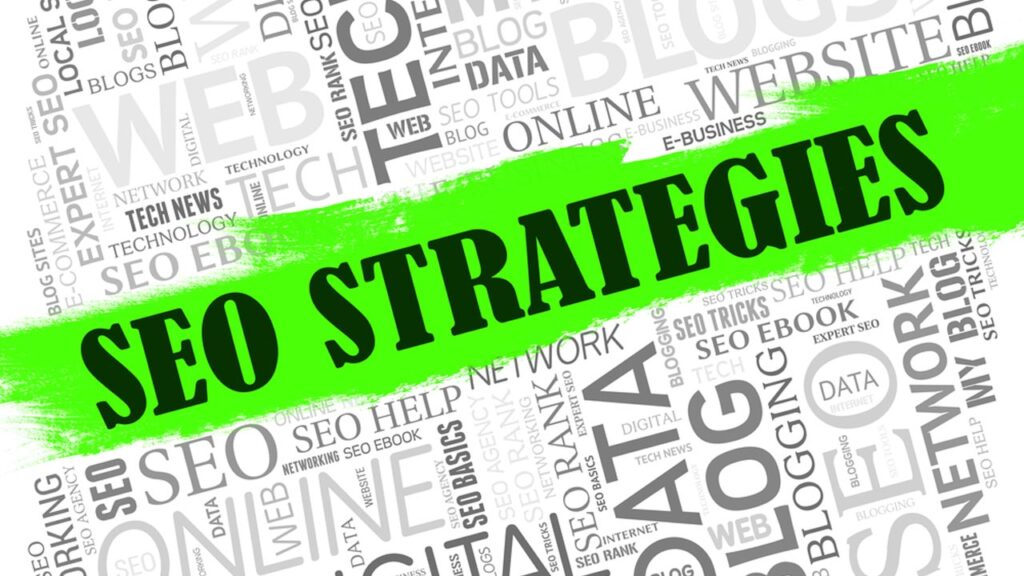Homepage SEO Mastery: Elevate Your Site’s First Impression with Proven Strategies
Brett Lewis
SEO - December 26, 2023

Optimizing your website’s homepage for search engines is essential, but often ignored. This guide provides a direct blueprint for homepage SEO, ensuring your site’s first impression on both users and search algorithms is a powerful one. From title tags to internal linking and visual content, we lay out the critical elements you need for a fully optimized homepage.
Key Takeaways
- Homepage SEO is vital for setting the structure, speed, and clarity of a website’s purpose, with key elements like an effective title tag, compelling meta description, and strategic internal links being crucial for SEO performance.
- Balanced integration of target keywords, comprising both branded and non-branded, within homepage content including title tags and meta descriptions, is essential for enhancing search visibility and user intent alignment.
- Optimizing visual elements like images and videos, implementing responsive design, and accelerating page speed are key strategies for improving homepage usability and user experience, thereby boosting SEO.
The Essence of Homepage SEO
Consider your homepage as the ‘front door’ of your website. It’s where the journey begins for most users and search engines alike. In the world of SEO, the homepage often gets overlooked. But in reality, homepage SEO exists and it’s a critical player in your website’s SEO strategy, serving a multipurpose role of structure, speed, and clarity about your website’s purpose. This is why it’s important to focus on a strategy called homepage SEO.
Crafting an Effective Homepage Title Tag
We begin with the title tag, the HTML element that specifies the title of your webpage. Consider it as the headline of your homepage. It’s what users see in their browser tabs, and more importantly, it’s one of the first things search engines notice.
Crafting an effective title tag is a blend of precision and creativity. Your title should be:
- Eye-catching
- Accurate
- Must include the target keyword and brand name
- Play up the brand and reference top products or services to encourage higher click-through rates.
Polishing Your Homepage Meta Description
Following the title tag, we have the meta description. Think of it as your homepage’s elevator pitch. It’s a brief summary that appears in search engine results, providing a sneak peek into what your site offers.
Crafting a compelling meta description is an art. It needs to summarize your site’s content accurately, be enticing, and strengthen click-through rates, serving as a teaser for users.
Strategic Use of Internal Links
Finally, let’s discuss internal links. These are the unseen bridges that connect the different pages of your website, guiding both users and search engines. They aid navigation, reinforce site hierarchy, and distribute page authority across your website.
Optimizing these internal links provides essential context about the relationships between other pages and the overall site structure, facilitating search engine indexing and comprehension.
Unveiling the Power of Target Keywords
Moving forward, we explore the realm of target keywords. These are the specific terms and phrases that your potential customers use to search for your products or services online. The magic lies in identifying these relevant keywords and incorporating them into your homepage content. Doing this can significantly boost your visibility on search engines, attract more traffic, and match user intent.
Balancing Branded and Non-Branded Keywords
In the grand scheme of SEO, balancing branded and non-branded keywords is a delicate dance. Branded keywords typically drive higher conversion rates due to brand familiarity, while non-branded keywords expand visibility to potential new customers and leads who are not searching for the brand directly. So, how do you strike the right balance? It’s all about understanding your audience, tracking performance, and allocating appropriate resources.
Keyword Integration Techniques
Integrating target keywords into your homepage content is like weaving a beautiful tapestry. Each thread, or keyword, needs to be carefully placed to create an overall picture that is both aesthetic and meaningful. Whether it’s in the H1 tag, meta description, or within the body text, keywords need to be embedded naturally and thoughtfully to match search intent and help search engines understand your content context.
Optimizing Visual Elements for Search Engines

Subsequently, we will concentrate on the visual components of your homepage. In a world where a picture is worth a thousand words, images and videos can be powerful tools to engage visitors and elevate your SEO game. But remember, it’s not just about having visually appealing content; it’s crucial to optimize these elements for search engines as well.
Image Optimization Best Practices
From file names to alt tags, image optimization is an intricate process. It involves selecting the ideal format, size, and resolution that balance quality and loading speed. Unique images can improve search rankings compared to stock photos that are widely used.
And remember, reducing image sizes without compromising quality can lead to faster webpage load times, enhancing both user experience and search engine rankings.
Video Content Considerations

Videos are a great way to engage visitors on your homepage. They make the site visually rich and enticing, effectively communicating the benefits of your company. But remember, while videos enhance the homepage SEO, it’s essential to accompany them with text content for a well-balanced homepage.
Enhancing Homepage Usability and Experience
Switching focus, we’ll now concentrate on improving user experience on your homepage. From loading speed to design, every element on your homepage plays a role in shaping a visitor’s experience. And remember, a positive user experience not only retains visitors but also boosts your SEO performance.
Responsive Design Implementation
In today’s digital landscape, a mobile-friendly homepage is not a luxury—it’s a necessity. Responsive website design ensures your homepage is easily navigable and accessible on small screens, greatly enhancing user experience and SEO. Plus, with Google’s mobile-first indexing, it’s crucial to ensure that images and other visual elements are optimized for mobile.
Page Speed Optimization Tactics
Did you know that a mere second’s delay in page response can result in a 7% reduction in conversions? Page speed is a critical factor in user experience and SEO.
By implementing HTTPS, optimizing HTML, and using structured data markup, you can significantly optimize your homepage, enhancing its loading speed and SEO performance.
Building a Strong Link Profile
Links are the highways of the internet. They connect different web pages and websites, creating a network of information. Building a strong link profile is crucial for homepage SEO as it signals trust and approval from other websites, improves rankings, and drives traffic.
Identifying Opportunities for High-Quality Backlinks
Finding potential high-quality backlink sources can be a bit like hunting for treasure. It requires strategy, patience, and a bit of luck. But with the right tools and tactics, you can build a list of relevant websites to contact for link-building campaigns and estimate the potential referral traffic from a backlink.
Monitoring Backlink Health
Like a gardener tending to their plants, monitoring the health of your backlinks is an ongoing task. It involves assessing the quality, quantity, and relevancy of all links pointing to your homepage.
Regular audits can help you spot any issues early and ensure your link profile remains strong and healthy.
Homepage Content: More Than Just Aesthetics
Content is the soul of your homepage. It communicates your brand’s unique story, highlights your offerings, and guides users towards fulfilling the main purpose of your website. But remember, homepage content is more than just aesthetics; it’s about creating engaging and relevant content that resonates with your audience and search engines alike.
Creating Engaging and Relevant Content
Creating content for your homepage, including an engaging blog post, is like preparing a feast for your guests. It needs to be engaging, relevant, and satisfying. Whether it’s through compelling copy, stunning visuals, or interactive elements, your content should highlight your brand’s unique selling points and provide clear direction for users.
Showcasing Social Proof and Testimonials
Nothing speaks louder than the words of satisfied customers. Showcasing social proof and testimonials on your homepage can help establish credibility and trust, encouraging potential customers towards conversion. From client reviews to case studies, there are various ways to leverage social proof and testimonials to enhance your homepage content.
Advanced Homepage SEO Techniques
Prepared to elevate your homepage SEO? We’ll now explore some sophisticated techniques, such as implementing structured data markup and fine-tuning HTML elements.
These techniques can enhance your search engine performance, helping your site stand out in search results and attract more organic traffic. One such technique is utilizing the google search console to monitor and improve your site’s visibility.
Structured Data Markup for Enhanced SERP Appearance
Structured data markup is like a secret language that you and search engines speak. It helps search engines understand your content better, potentially leading to rich snippets in search results.
Implementing structured data markup on your homepage can enhance its visibility and make your listing stand out.
Fine-Tuning HTML Elements
Fine-tuning HTML elements is like tuning a musical instrument. It requires skill, precision, and a keen ear (or in this case, eye) for detail. By optimizing header response codes and ensuring your codebase is clean and efficiently crawlable, you can significantly enhance your homepage’s SEO performance.
Aligning Homepage SEO with Overall Site Architecture
Finally, we are going to examine how to synchronize your homepage SEO with your comprehensive site architecture. A well-structured homepage can support efficient crawling and indexing by search engines, enhancing the visibility of your website. It also plays a critical role in directing users to different sections of your site.
Site Navigation and Hierarchy
Site navigation and hierarchy are like the roadmap of your website. They guide users and search engines through your site, ensuring they can easily find the information they’re looking for. A well-structured homepage with consistent and descriptive navigation labels can positively influence sitelinks in Google search by enhancing the site’s structure and SEO.
Homepage as a Gateway to Dedicated Landing Pages
Much like paid ads, think of your homepage as a gateway, leading visitors to various destinations within your website. It should cater to a diverse audience and encourage further exploration of the website. Navigation from the homepage to important landing pages should be straightforward, allowing both users and search engines to find targeted content easily.
Summary
We’ve embarked on an enlightening journey through the realm of homepage SEO, exploring everything from the importance of a captivating title tag to the power of a strong link profile. By now, you should have a comprehensive understanding of how each element of your homepage can contribute towards your SEO efforts and bring you one step closer to achieving your digital goals.
Frequently Asked Questions
What is the importance of a homepage title tag?
The homepage title tag is crucial as it is one of the first things search engines notice. It should be eye-catching, accurate, and must include the target keyword and brand name to encourage higher click-through rates.
How can I balance branded and non-branded keywords on my homepage?
To balance branded and non-branded keywords on your homepage, it’s essential to understand your audience, track performance, and allocate resources accordingly.
How can I optimize the visual elements on my homepage for search engines?
To optimize the visual elements on your homepage for search engines, ensure images are in the ideal format, size, and resolution for a balance of quality and loading speed, and accompany visual elements with text content for a well-balanced homepage.
What is the importance of a mobile-friendly homepage?
Having a mobile-friendly homepage is crucial in today’s digital landscape because it ensures your website is easily navigable and accessible on small screens, greatly enhancing user experience and SEO.
How can I align my homepage SEO with my overall site architecture?
To align your homepage SEO with your site’s architecture, ensure your homepage is well-structured for efficient crawling by search engines and directs users to different site sections. This can significantly improve your site’s overall SEO performance.
